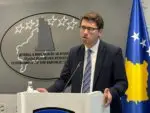The European Union (EU) once aspired to reshape the world in its image, but its primary focus today has shifted to securing its borders. On January 1, 2025, Romania and Bulgaria officially joined the Schengen Zone, marking a rare positive development amid the EU’s ongoing internal and external challenges.
However, this long-awaited Schengen expansion highlights underlying tensions. Romania and Bulgaria had fulfilled the technical requirements for Schengen membership as early as 2011 but faced persistent delays, mainly due to internal EU concerns over irregular migration and political pressures.
Austria’s Role and Changing Dynamics
Austria played a pivotal role in the recent decision. Despite extending border controls with Hungary and Slovenia for another six months in late 2024, Austria ultimately backed Romania and Bulgaria’s Schengen bids. This was partly influenced by lobbying from Hungarian Prime Minister Viktor Orbán. Austria’s internal political landscape also shifted, with the far-right Freedom Party (FPÖ) gaining influence and supporting stricter migration policies.
This agreement adds 259 kilometers of EU external borders with Turkey, emphasizing security concerns. Similar measures have been adopted across the bloc, with countries like Germany, Denmark, France, and Italy reinstating partial border controls in response to migration and security challenges.
Strengthening External Borders
As internal border checks become normalized, the EU is doubling down on its external border security. Poland, set to preside over the EU Council, will oversee the rollout of the Entry/Exit System for registering non-EU visitors to the Schengen Zone. Additionally, the EU is preparing the European Travel Information and Authorization System (ETIAS), akin to the U.S. ESTA, adding a layer of oversight for travelers.
These measures are expected to increase administrative requirements, even impacting EU citizens indirectly. The UK has already introduced a similar electronic travel authorization system in response to the EU’s changes.
A Fortress Europe
Public sentiment across Europe has largely embraced these tighter border controls, reflecting a defensive shift in the EU’s collective mindset. Euroskeptic criticism has faded, replaced by demands for stronger centralized solutions like bolstering Frontex, the EU border agency.
This growing focus on security is evident in high-level discussions. Leaders like Italian Prime Minister Giorgia Meloni have backed a renewed EU migration pact, while Viktor Orbán advocates deeper EU-Turkey collaboration. Talks on renewing the 2016 refugee agreement with Turkey have gained traction, with recent EU-Egypt deals serving as a precedent.
While the Schengen Zone expands, Europe’s fortified borders reflect a shift from visionary integration to a focus on self-defense. The EU’s ambitions now prioritize shielding the bloc from external threats, encapsulating the rise of “Fortress Europe.”







